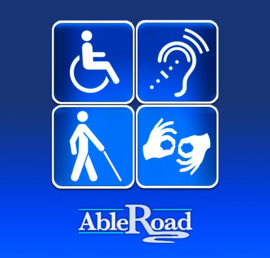By Bennett Purser
In honor of November being Assistive Technology Awareness Month, the UATP spoke with Paralympic gold medalist Muffy Davis about her career, how she uses assistive technology in sports and her experiences with the
Utah Assistive Technology Foundation.
For Paralympic gold medalist Muffy Davis, assistive technology isn’t just for competitive sports, but what she uses every day to live her life to the fullest. With November’s celebration of Assistive Technology Awareness Month, Davis shares her gratitude for adaptive sports and the Utah Assistive Technology Foundation, which made some of her devices possible.
“For me,” Davis said. “They enable me to have a full life. That’s what assistive technology does, enabling people to be able to do the things they want to do.”
As an avid skier her throughout her life, an accident 25 years ago left Davis paralyzed from the waist down at age 16. After the tragedy of the accident, she was determined to get back back on the mountain and conquer the slopes.
She taught herself how to ski sitting down and embraced a new realm of competitive winter sports. Since then, Davis continues to be an avid skier as well as hand cycler and mountain climber. She has competed in the 1998, 2000, 2002, 2010, and 2012 Paralympic Games, where she won three gold medals in hand cycling.
It was 2008 when she first came to the UATP seeking information about low interest loans for assistive technology devices through the Utah Assistive Technology Foundation. A unit within the UATP, the foundation partners with Zions Bank to make new devices a financial possibility.
Davis was interested in putting an indoor elevator in her home after retailers told her that a custom lift would be about the same price as an elevator, she was approved for a low interest loan and had the home elevator installed.
A few years down the road, Davis returned to the UATF when her car was no longer meeting her needs. With a growing family, it was time to find a more practical vehicle. She was approved for her second loan from the UATF to get a van fit for her wheelchair and her new daughter.
Davis, who won three gold medals during the London Paralympic games, has gone great lengths with assistive equipment, but it’s the small things, Davis said, that assistive technology influences the most.
“Having this fully accessible van is so much easier. I can do more things, I can go farther,” she said. “It’s the peace of mind, I have a five year old daughter so knowing I can go get her. It’s the little things.”
With assistive technology fully implemented in Davis’ home and daily life, she notes the importance of adaptive devices in recreation. The type of devices that make her career and success possible, devices like adaptive skis and hand pedaled bicycles, bring her joy beyond competition.
“Aside from the fact that I love to compete at an elite level and get physical fitness and exercise, just being able to recreate with my family is immeasurable." Davis said. "I can recreate with my daughter, and that’s what I love to do.”
With Assistive Technology Awareness Month, Davis mentions how the youth embraces assistive technology. Those she’s seen skiing in the resorts and biking in the summers, have impressed her with their dedication to perform despite any physical limitations.
 “What I think is so wonderful is that assistive technology is not a surprise to them. Kids are growing up and they’re like ‘of course I can play wheelchair basketball,’ or ‘of course I want to swim with adaptive technology, or run or ride a bike,'” Davis said. “So the fact that more kids in wheelchairs don’t even consider that it may not be a possibility.”
“What I think is so wonderful is that assistive technology is not a surprise to them. Kids are growing up and they’re like ‘of course I can play wheelchair basketball,’ or ‘of course I want to swim with adaptive technology, or run or ride a bike,'” Davis said. “So the fact that more kids in wheelchairs don’t even consider that it may not be a possibility.”
She expressed her gratitude to resources like the Utah Assistive Technology Foundation, who provides funds when someone doesn’t have the financial needs, but “the idea and the passion.”
Muffy Davis is in the process of writing her first book, a memoir recalling her experiences as a Paralympian, choosing to do more than survive, but to thrive. The book is to be published within the next year. To learn more about Muffy Davis’ story, visit her website here and for more information on the Utah Assistive Technology Foundation and our partnership with Zions Bank click here.















.jpg)








